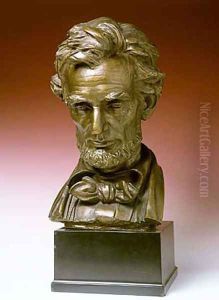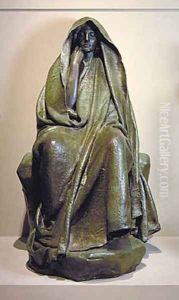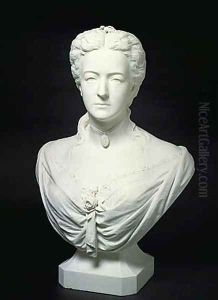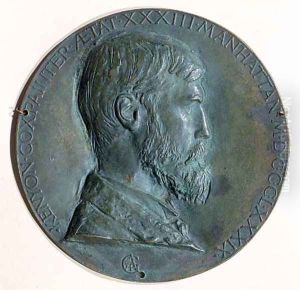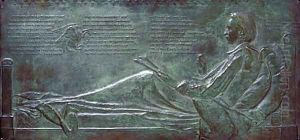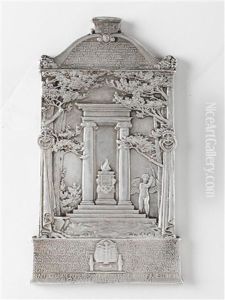Augustus Saint-Gaudens Paintings
Augustus Saint-Gaudens was one of the most eminent American sculptors of the late 19th century. Born on March 1, 1848, in Dublin, Ireland, to a French father and an Irish mother, Saint-Gaudens moved to New York with his family when he was just an infant. His early interest in art led him to apprentice as a cameo cutter, a skill that honed his detail-oriented approach to sculpture. Seeking formal education in art, he attended classes at the Cooper Union and the National Academy of Design before moving to Paris to study at the École des Beaux-Arts, one of the most prestigious art schools of its time.
Saint-Gaudens's time in Europe was transformative, exposing him to classical and Renaissance art, which would greatly influence his work. After his studies, he spent time in Rome, further absorbing classical art and architecture, which informed his evolving aesthetic. Returning to the United States in the late 1870s, Saint-Gaudens quickly established himself as a leading figure in American art, embodying the ideals of the American Renaissance, a period which sought to elevate American art and architecture to the level of their European counterparts.
Throughout his career, Saint-Gaudens created numerous public monuments, reliefs, and coins, blending classical traditions with a distinctly American sensibility. His works include the famous Robert Gould Shaw Memorial on Boston Common, the Adams Memorial in Rock Creek Cemetery in Washington, D.C., and the monumental Standing Lincoln in Chicago's Lincoln Park. He was also involved in designing the 1907 $20 gold coin, which is considered one of the most beautiful American coins ever produced.
Saint-Gaudens was a key figure in American arts, not only for his artistic contributions but also for his role as a mentor and advocate for young artists. He taught at the Art Students League of New York and was instrumental in establishing the Cornish Colony, an art colony in New Hampshire that attracted many artists and writers of the period. His influence extended beyond his lifetime, shaping American sculpture and public art for generations.
Augustus Saint-Gaudens's legacy is marked by his dedication to craftsmanship, his integration of American themes with classical form, and his influence on the trajectory of American art. He died on August 3, 1907, in Cornish, New Hampshire, after a battle with cancer. His work continues to be celebrated for its beauty, emotional depth, and technical mastery, securing his place as one of the great sculptors in American history.
